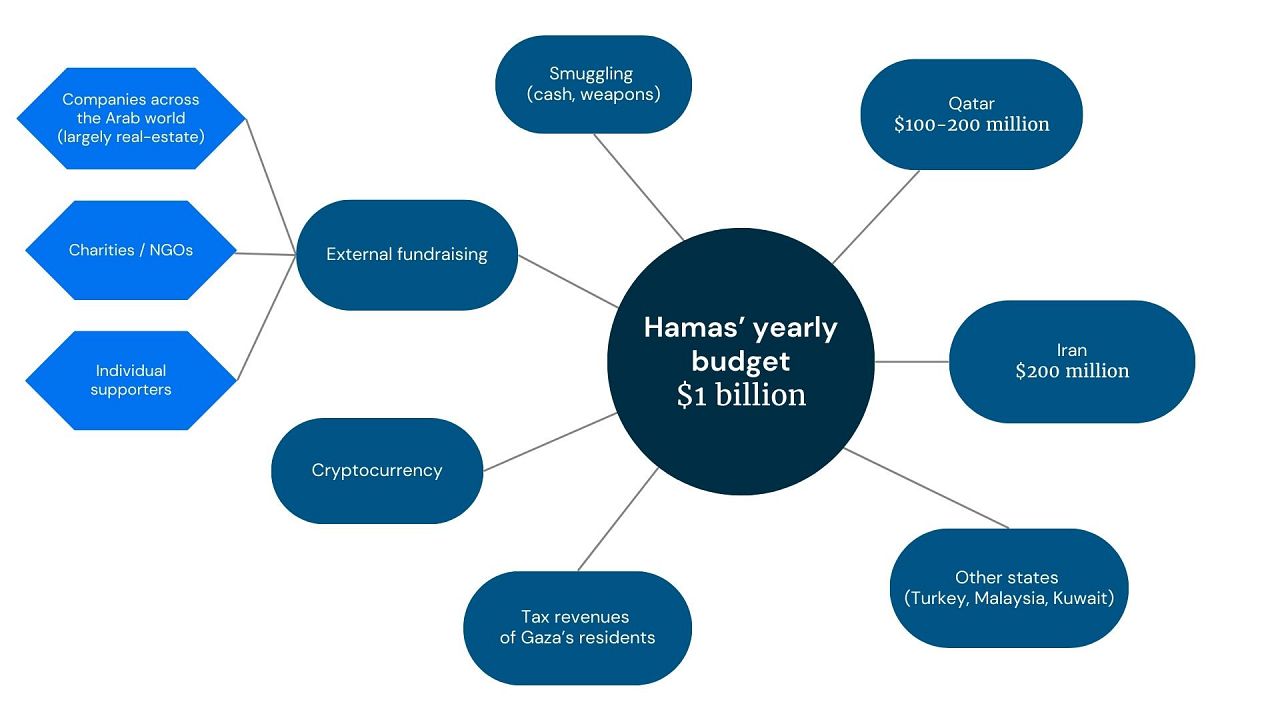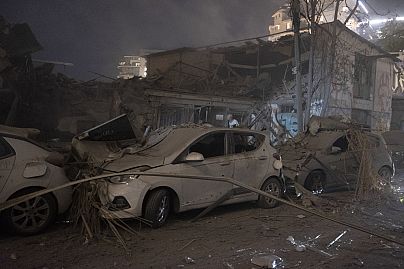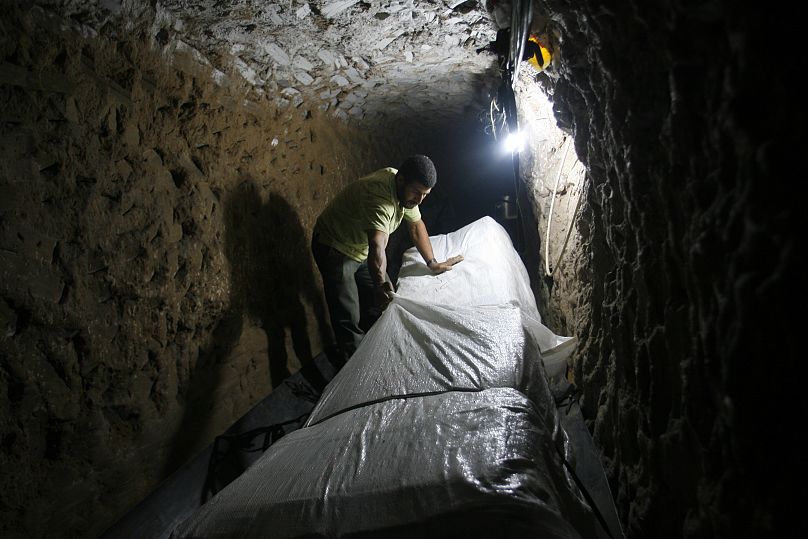The bulk of the Palestinian militant group’s funding is provided by foreign governments, a former US counter-terrorism financial analyst told Euronews.
The US Treasury Department has imposed two rounds of sanctions on key Hamas-linked officials and financial networks in the past two weeks, following the 7 October attacks on Israel.
The measures target the Palestinian militant group’s external fundraising, which includes its secret investment portfolio: A series of investments largely comprising stakes in real estate companies that are spread mainly across the Arab world and held by Hamas supporters, according to Jonathan Schanzer, former counter-terrorism financial analyst at the US Department of the Treasury.
The organisation’s followers grant Hamas access to the funds by transferring the business proceeds to the group “in underhand ways,” explained Schanzer, now senior vice president for research at the Foundation for Defense of Democracies.
The US sanctions aim to block any kind of transaction to and from the identified firms and individuals, to cut off the capital flow to the US and EU-designated terrorist group. When the US takes this decision, other countries usually jump on board.
But do these penalties actually harm Hamas’ financial resources? Probably not, according to Schanzer, namely due to the significant influx of funds from elsewhere.
About half of Hamas’ funding comes from foreign governments
Hamas’ external sources of revenue are considerable, with estimates putting them to the tune of tens of millions of dollars.
However, “as a percentage of the terrorist group's overall budget, it's far more important to focus first and foremost, on Iran and Qatar”, Schanzer said.
According to the former counter-terrorism analyst, Hamas has an annual budget of around $1 billion (€938 million) to govern the Gaza Strip and run its military arm.
“Around $200 million of that comes from Iran. Another $100 to 200 million comes from Qatar”, Schanzer added.
Turkey is believed to be another stalwart backer of the Palestinian group, following President Recep Tayyip Erdoğan’s rise to power in 2002.
Unlike many of its NATO allies and the EU, Turkey does not consider Hamas a terrorist association and hosts members of the group on its territory.
"Hamas is not a terrorist organisation, it is a liberation group, 'mujahideen' [Arabic term for Muslims fighting on behalf of their faith or community] waging a battle to protect its lands and people," Erdoğan told deputies from his party last week.
Turkey is also home to some of the group’s top leaders, as well as companies that operate under the guise of legitimate businesses while illegally funding Hamas.
Schanzer views Ankara’s position with “serious concern”, as the country is part of NATO and at the same time “allows illicit finance to take place” on its territory.
The US Treasury Department says other countries such as Iran, Qatar, Sudan and Algeria harbour key Hamas members, operatives and financial facilitators as well.
“They are there as guests of the governments. There is no effort to contain, stop or arrest them”, Schanzer said.
“One of the reasons why Hamas was able to carry out the attack [in Israel] on 7 October is because the US and other American allies have allowed them to operate in these places”, Schanzer highlighted.
“We have turned a blind eye to this activity for more than a decade,” he added.
According to Schanzer, despite having the largest counter-terrorism finance infrastructure in the world, the US still has limited resources.
On the other hand, sometimes it’s a question of balancing priorities.
“There were choices made to ignore the Hamas financiers in the US over the last five to 10 years because these people were serving as sources on ISIS or other direct threats to the homeland (...), a decision that is wise for only so long”, Schanzer said.
‘Financial suicide bombers’
But Hamas’ sources of funding do not end here.
In addition to the taxes it collects from Gaza’s 2.1 million residents, the organisation has been using crypto as a fundraising method since at least 2019, according to Elliptic, a British firm that analyses virtual currency transactions.
Cryptocurrency wallets linked to Hamas and seized by Israeli authorities received more than $40 million between 2020 and 2023, as first reported by The Wall Street Journal, citing data from Tel Aviv-based crypto analytics firm BitOK.
The smuggling of money, arms and other goods plays an important role too. The Israel Defense Forces said last week that Hamas smuggled weapons and ammunition through tunnels under the Egypt-Gaza border in the runup to its 7 October attack.
As Schanzer cast his mind back to his time at the US Treasury, he recalled coming across what they used to call “financial suicide bombers”.
The term applies to businessmen who take out loans supposedly for their entrepreneurial activity, but instead “just hand the money over to Hamas and default” on the repayment of the debt, Schanzer explained.
The final source of funds that he cited were non-governmental organisations, such as charities.
The case of the Holy Land Foundation (HLF) is an example of success for US counter-terrorism efforts. Founded in 1989 and headquartered in Texas, it was the largest US Muslim charity.
In December 2001, the US designated HLF a terrorist organisation, seized its assets and shut it down. Since 1995, when it first became illegal to provide financial support to Hamas, the organisation provided around $12.4 million in funding to the group, according to the Department of Justice in Washington, DC.
Besides the US, Schanzer acknowledged the existence of Hamas-linked charities in Europe - specifically in the UK - and South Africa.
For instance, Interpal, or the Palestinian Relief and Development Fund, is a London-based charity created in 1994 to help Palestinians. In 2003, the US designated it a terrorist association for allegedly supporting Hamas.
However, in 2010, after three inquiries by the British authorities, the High Court in London found it libellous to state that Interpal supported the Palestinian militant group. The charity therefore continues to operate from the UK capital.
“There are a lot of entities that are either suspected or even proven by a government [to be financing Hamas]. But the standard of proof is different in other countries, so these networks continue to function,” Schanzer said.














